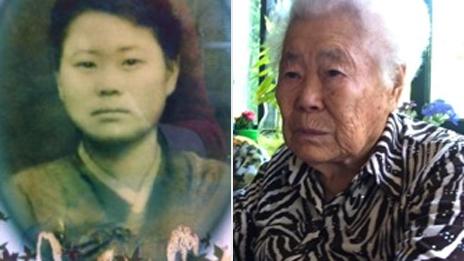Japan recalls Korean envoy over 'comfort women' statue
- Published

South Korean activists set up the statue outside the Japanese consulate in Busan on 28 December
Japan has temporarily withdrawn its ambassador to South Korea, amid an escalating row over a statue representing wartime sex slaves.
The statue was installed by activists outside the Japanese consulate in the South Korean city of Busan last month.
South Korea has long called for reparations for "comfort women", who were forced to work in Japanese military brothels during World War Two.
Japan says the statue violates a previous agreement on the issue.
Bad blood between Japan and Korea persists
Why is the statue such a big deal?
The 1.5m-tall (5ft) bronze statue depicts a young, barefoot woman sitting in a chair.
It has become a symbol of hardships faced by the women and the perceived lack of adequate apology and compensation from Japan.
Many of the estimated 200,000 women forced to be wartime sex slaves were Korean. Others came from China, the Philippines, Indonesia and Taiwan.
It is a perennial issue that has dogged relations with Japan.
The matter has only escalated with each passing year as many of the survivors are old and dying. About 46 survivors are thought to remain in South Korea.
Is it the only statue?
No. In fact a more famous statue is outside the Japanese embassy in the South Korean capital, Seoul.
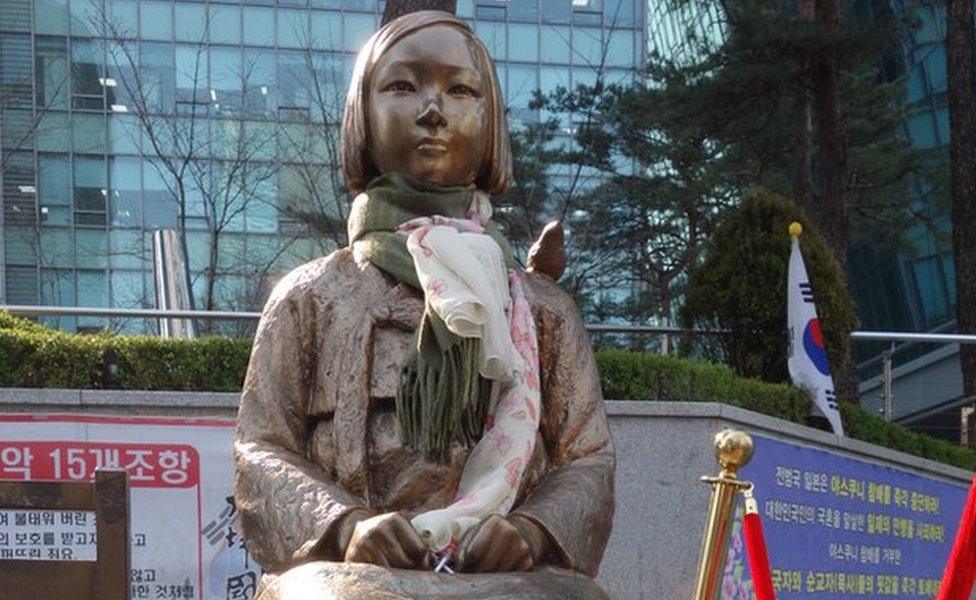
A "comfort woman" statue was set up in front of the Japanese embassy in Seoul in 2011
It was put up in 2011 to mark the 1,000th rally by activists calling for an apology and compensation.
Another 37 are thought to exist in South Korea, while in Australia a similar statue has sparked a row between Korean and Japanese community groups.
What has happened in the latest incident?
South Korean activists put up the statue in Busan on 28 December as a protest against a deal struck exactly one year before, in which Japan apologised and promised to give 1bn yen (£7m; $8.6m) to a fund for Korean women.
Critics say it was reached without consultation with victims, did not contain Japan's acknowledgement of legal responsibility, and did not provide direct compensation to the victims.
Busan police initially removed the statue but there was fierce domestic pressure for it to remain, reported The Korea Herald., external
Days later, after Japan's defence minister visited a controversial war shrine in Tokyo, local authorities allowed it to be reinstalled.
What has Japan said about this?
Japan says the statue violates the 2015 deal, which agreed that Japan's reparations would "finally and irreversibly" resolve the issue.
In a statement on Friday, Japanese Prime Minister Shinzo Abe said it was important that both countries carry out their agreement.
It has withdrawn its Busan consul-general and South Korean ambassador. It also suspended a currency swap and postponed high-level economic discussions.
"We have repeatedly asked South Korea to handle the resolution of this issue appropriately, but the situation has not improved, so we have taken this action," Japanese Chief Cabinet Secretary Yoshihide Suga said.
The statues have been a constant source of irritation for the Japanese.
Japan has previously claimed the statue outside its Seoul embassy is illegal as it breaches the 1961 Vienna Convention, which dictates that host countries must protect the premises of diplomatic missions.
- Published28 April 2015

- Published28 December 2015
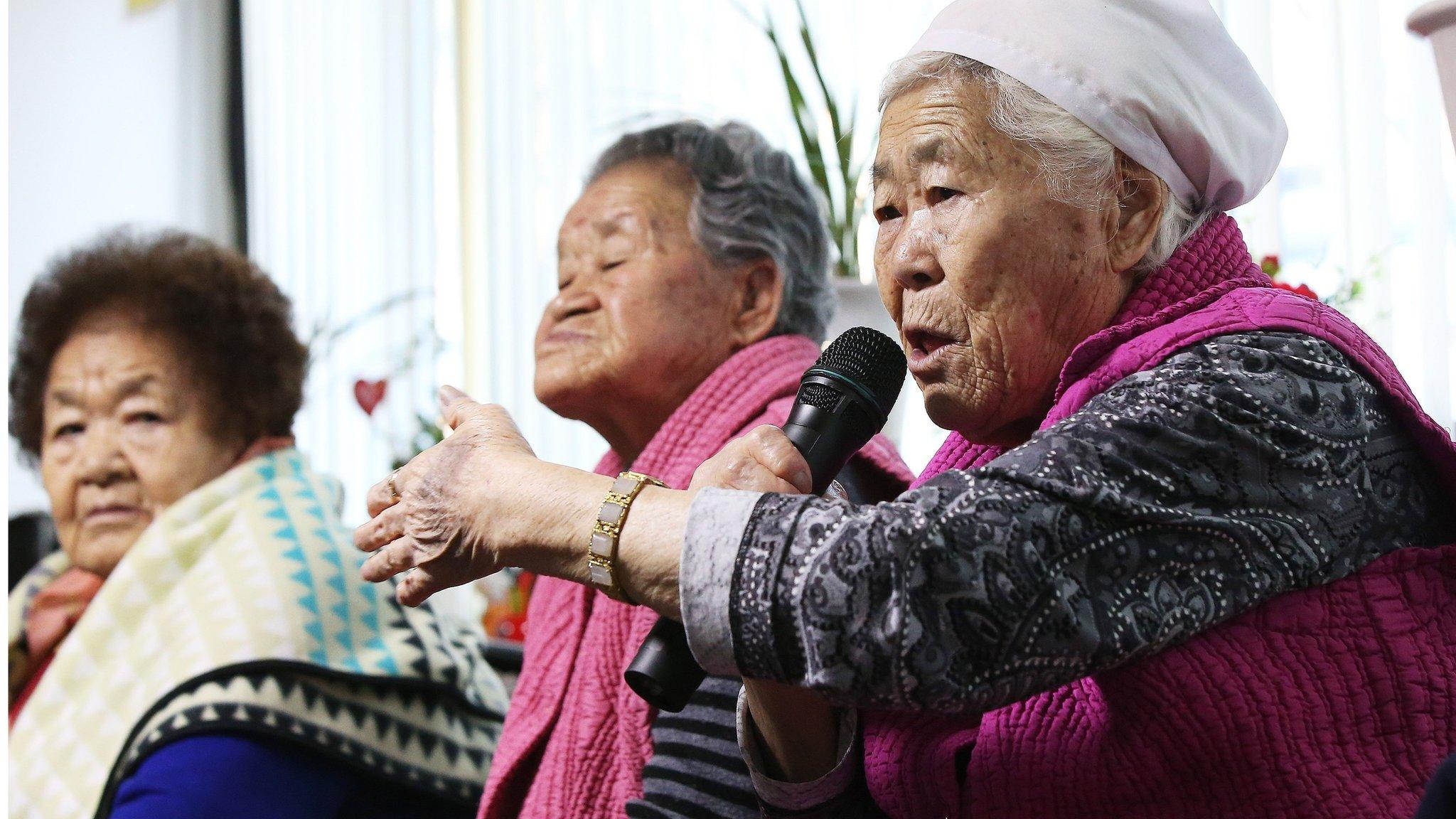
- Published20 December 2016
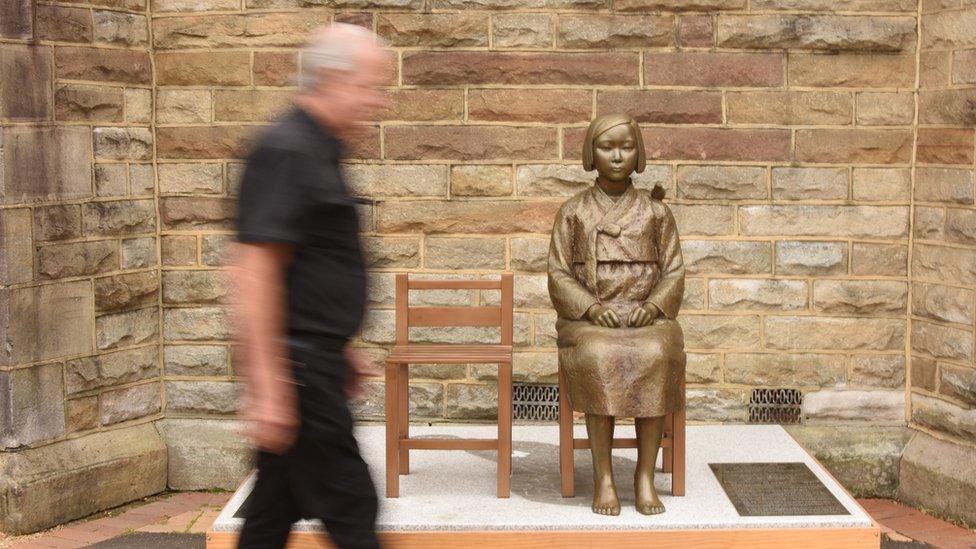
- Published28 December 2015
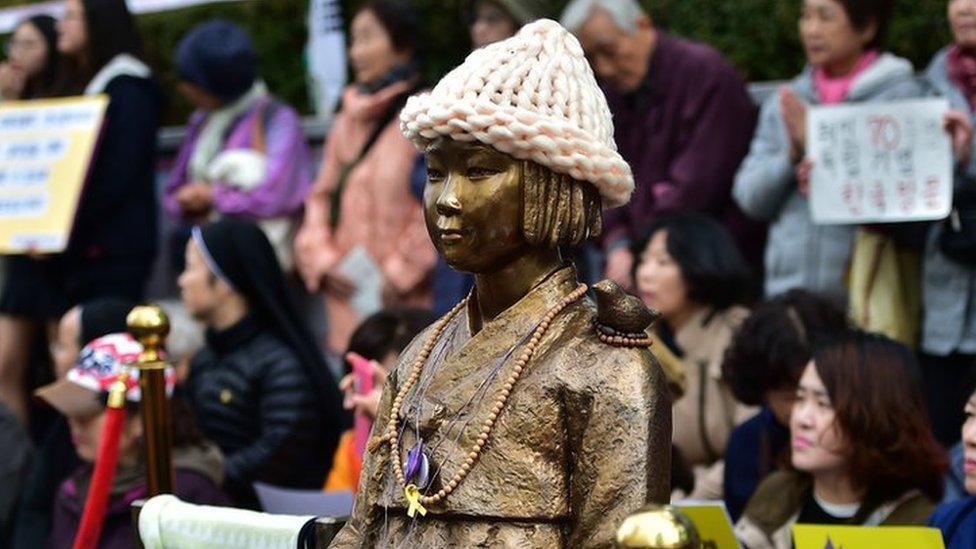
- Published3 August 2015

- Published29 May 2013
